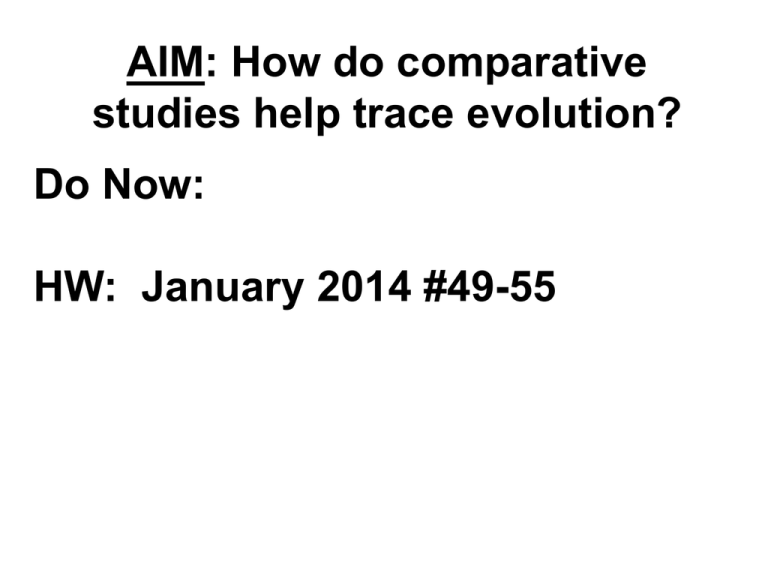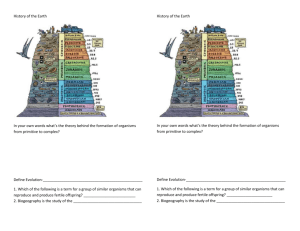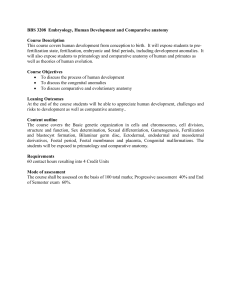AIM: How do comparative studies help trace evolution?
advertisement

AIM: How do comparative studies help trace evolution? Do Now: HW: January 2014 #49-55 How do we know we are related to chimps & gorillas? COMMON ANCESTOR Comparative Studies • Study of similarities between living things. • Provides evidence of a common origin (ancestor) Why do scientists do comparative studies? To observe how closely organisms are related to each other and see evolutionary patterns COMPARATIVE STUDIES • Who are we closely related to? • Who are we distantly related to? Types of Comparative Studies • Anatomy • Embryology • Biochemistry • DNA and Proteins Comparative Anatomy • What is anatomy? • What do you think comparative anatomy studies? • Study of structural similarities and differences in living things HOMOLOGOUS STRUCTURES • Do you see any similarities between these organisms? • How are they similar? How are they different? Homologous Structures - similar structures, different form & function. Shows evolutionary relationships (they are related). VESTIGIAL ORGANS The appendix and the tail bone are both VESTIGIAL organs. What do they have in common? Vestigial structures- have no function. Why would an organism possess organs with little or no function? They are remnants of structures that may have had important functions in ancestral species, but no clear function in modern descendants. Hind leg in whales ANALOGOUS STRUCTURES • What do these two images have in common? Insect Wing Analogous Structures- similar form and function, different internal structure. Does not show evolutionary relationships. Divergent vs. Convergent Evolution: Divergent Evolution- the pattern of evolution in which species that were once similar to an ancestral species become increasingly different. Divergent Evolution occurs when populations change as they adapt to different environmental conditions. Once related species now look different. Convergent Evolution- the pattern of evolution in which distantly related organisms evolve similar traits. Convergent Evolution occurs when unrelated species occupy similar environments in different parts of the world. Unrelated species now look the same. Which is Which? Which is the gorilla, fish and rabbit? Comparative Embryology • In Comparative Embryology, related organisms show similar embryonic development Comparative Biochemistry • Comparative Biochemistry compares the DNA or Amino Acids of an organism in order to find relationships among living things. The more similar the DNA and Amino Acids, the more closely the two organisms are related. Common Ancestor • This evidence leads to the idea of: • COMMON ANCESTRY • All species living and extinct were derived from common ancestors. The Results of Genetic Variation: 1)Structural Change- the physical features of an organism. 2)Functional Change- molecular or biochemical changes affect how an organism works. Changes in DNA often lead to functional changes. 3)Behavioral Change- many of the specific behaviors today have become common because they have resulted in greater reproductive success.







